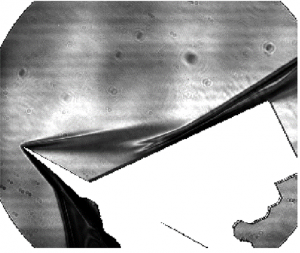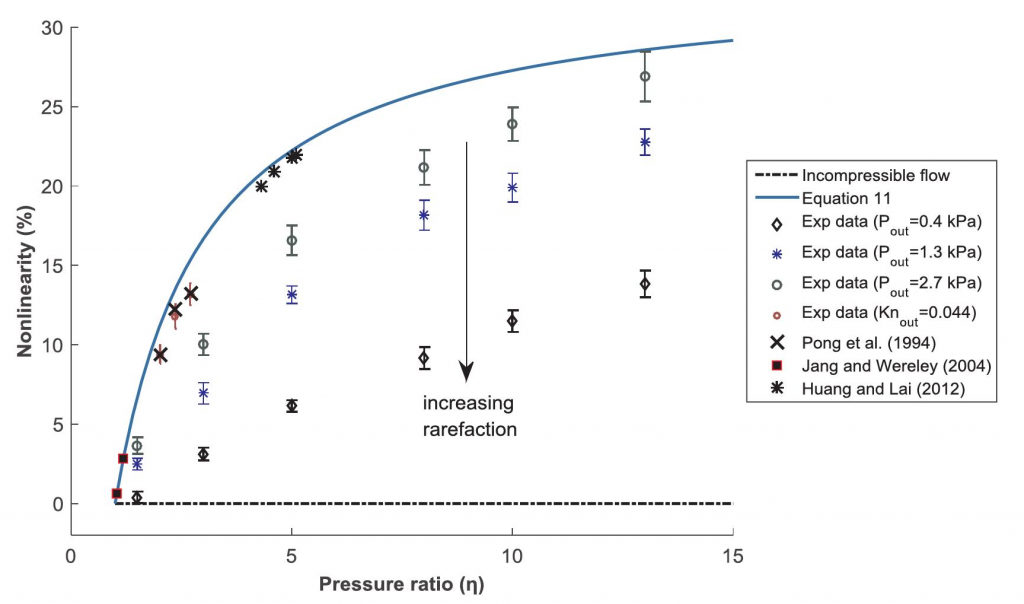Laser Diagnostics
I, along with students and colleagues, have developed a number of new diagnostic techniques, in our laboratory and we continue to develop cutting-edge measurement technologies for these challenging flows. Here are a couple of examples:
- With my ex-student Robert Hruschka and my colleague Harald Kleine I helped develop a density-sensitive visualisation technique for low-density hypersonic flows, and which can be operated at very high frame rates for high-speed imaging. The technique uses the anomalous dispersion behaviour of seeded Lithium or Rubidium alkali metal, when the laser is tuned in the vicinity of the D line. The technique is called resonantly enhanced shearing interferometry (or RESI) and it allows an increase in sensitivity of around 100 times relative to standard shearing interferometry. The original paper describing the technique can be found here. Separated hypersonic flows like the one shown below would be invisible using standard schlieren methods.

- With student Ben Kaebe and colleagues, I helped show the potential for high-speed scanning temperature measurements using vertical-cavity surface-emitting lasers. These diode lasers can be scanned in wavelength very rapidly and can make very fast and precise measurements. This paper desceibes a system using a single laser diode capable of measuring temperatures at 1.6 million scans per second.
- With student Rong Kang Gao I developed a method for measuring gas viscosity at high Knudsen numbers. This paper uses absorption spectroscopy in a hollow-core photonic crystal fiber to measure the viscosity of CO2 using absorption in the fiber. This paper uses that viscosity to quantify the nonlinearity in the pressure distribution along the fiber, without the need for very small pressure transducers.

Nonlinearity for different degrees of rarefaction and different pressure ratios